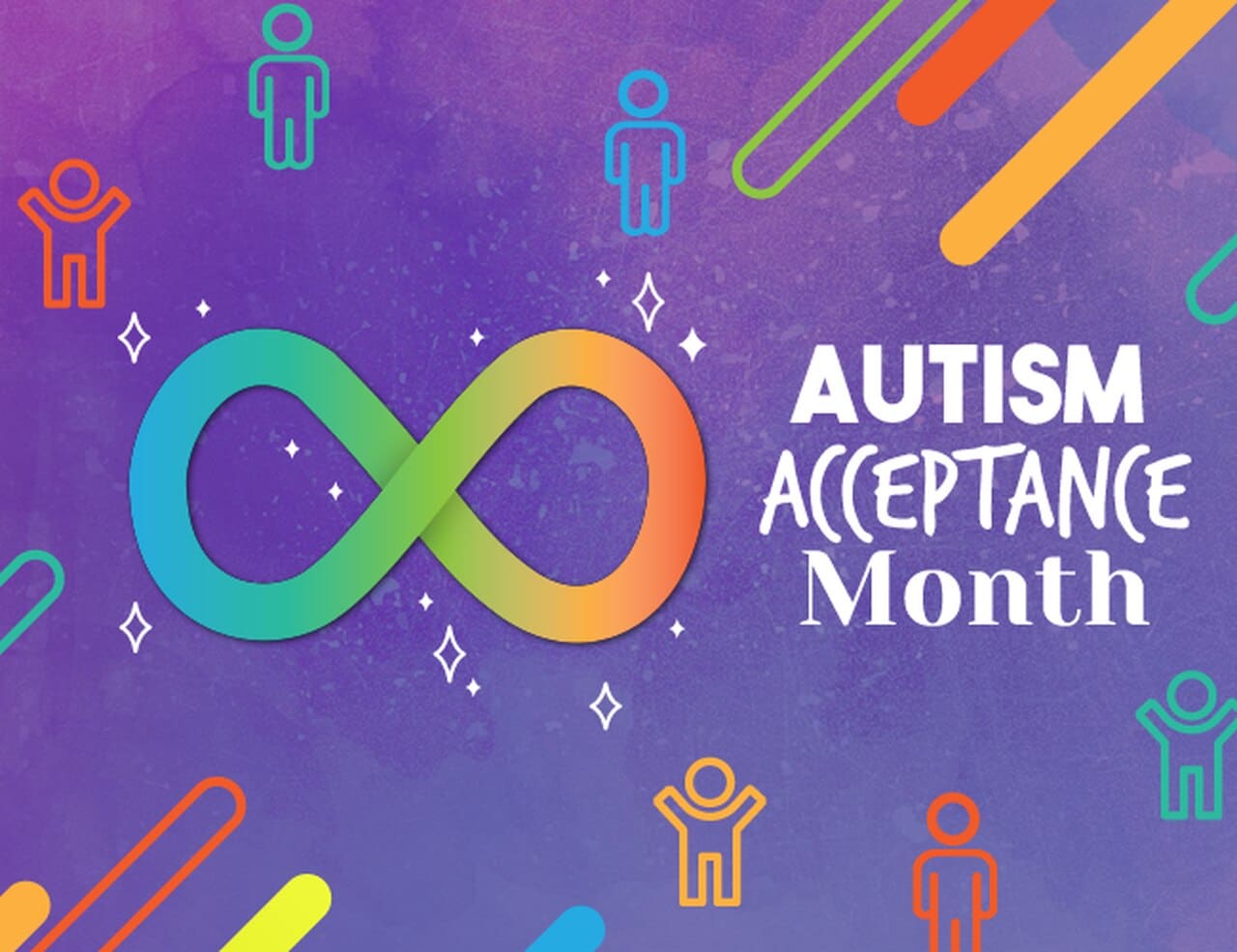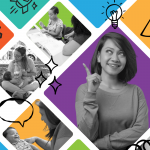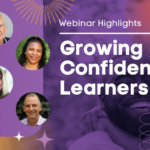For decades, April has been widely known as “Autism Awareness Month.” Earlier this year, in a powerful gesture toward moving from passive awareness to active acceptance, the Autism Society embraced a name change: The organization wants April to be known as “Autism Acceptance Month.”
The percentage of people living with autism continues trending upward. One in 54 Americans lives with autism, and earlier detection contributes so strongly to their ability to do so fully. As earlier detection becomes more and more important, researchers and practitioners are working to ensure that detection techniques and targeted interventions continue to grow in sophistication and accessibility.
Research on speech and language development is central to these efforts. An autism spectrum disorder (ASD) diagnosis often hinges on recognizing delayed language acquisition. Among the researchers and practitioners conducting research to improve recognition of delayed language acquisition are a number of LENA partners. These partners — professors, graduate students, and program directors at universities around the world — leverage LENA’s “talk pedometer” technology and subscribe to LENA SP.
For Autism Acceptance Month, we checked in with a few of these researchers to learn more about autism, autism research, and how LENA helps them contribute to earlier detection.
Dr. Gordon Ramsay is an Assistant Professor in the Department of Pediatrics at Emory University School of Medicine, and serves as the Director of the Spoken Communication Laboratory at the Marcus Autism Center within Children’s Healthcare of Atlanta.
Dr. Sloane Burgess is an Associate Professor of Special Education and Speech Pathology and Audiology at Kent State University. Tricia McCollum is an early childhood intervention specialist and a doctoral student in Dr. Burgess’s lab.
Dr. Beth Davidoff is an Assistant Professor in the College of Health Sciences, Education, and Rehabilitation at Salus University.
1. Tell us a little bit about your research. How does it help uncover the early signs of autism spectrum disorder, and why is that important?
Gordon Ramsay: We’re interested in learning about early vocal development and how it blossoms into speech and language, not only in children at risk of ASD, but also in typical development. We use LENA, prenatal ultrasound, motion capture systems, and a host of other technologies to examine how babies begin to interact with the world from the earliest moments of life. We’re interested in mapping out developmental trajectories across different areas of social behavior, since understanding neurodevelopmental disorders like autism is really about understanding change over time, not what things look like at one point in time.
What matters for learning how to talk is the interpersonal synchrony that infants and caregivers engage in from the moment babies are born. Pretty much everything babies do and caregivers do with babies is based on interaction. That really seems to be the active ingredient that all kinds of other systems build on, that scaffolds information flow between the infant and the world, and the world and the infant. The reason that’s important is it means that, by measuring interaction, we may be able to pick up signs of autism risk very early on, when the brain is still plastic and can be shaped either by social experience naturally or by appropriate interventions that we create, specifically tailored to the needs of each individual child.
Sloane Burgess and Tricia McCollum: Our research has focused on trying to understand the language environment that is experienced by preschool students with ASD. We are trying to find out how the language they experience might vary based on setting (self-contained versus integrated classroom) and activity (one-to-one instruction vs. play), and how the language they experience compares to what is experienced by typically developing peers. Once we understand what those language environments look like, we can create interventions utilizing classroom staff or typical peers to target some of the areas where children with ASD may not be actively engaging in communicative activities.
Beth Davidoff: My research involves describing the interactive social communication between caregivers and their children who are at the earliest stage of spoken language development. Research suggests that caregivers tune in more to their infants’ vocalizations when they are more “speech-like.” Very young children who display limited speech-sound repertoires, limited vocalizations directed to caregivers, and delayed development of early gestures may exhibit these red flags for autism earlier in development than caregivers realize. Use of day-long recordings of the home language environment may assist in earlier identification.
2. What’s something the average person probably doesn’t know about autism but should?
Gordon Ramsay: Years ago, we used to think about autism as being what we saw in older children or adolescents, because that’s when it was being picked up. We used to think, for example, that autism necessarily came along with a cognitive impairment. Over time, we’ve realized there’s no reason why autism should have anything to do with cognitive impairments, as long as it’s detected early enough. What we call autism around three years of age right now doesn’t necessarily look like the early signs of autism in the first year of life. Those precursors of autism during that early period are extremely malleable and amenable to treatment, and they can change dramatically over the next two years of a child’s life. That’s really a message of hope for parents.
Sloane Burgess and Tricia McCollum: The average person probably doesn’t realize the full spectrum that ASD encompasses. Each person with ASD can have different strengths and different areas of need. There’s a saying that’s very true: “If you have met one person with autism, then you have met one person with autism.”
Beth Davidoff: Although deficits in social interaction are a diagnostic criteria for autism spectrum disorder, children diagnosed with ASD often engage in social interactions with family members in ways that are sometimes dismissed as being “meaningless” or “stereotypical.” Echolalia is an example. In my study, it wasn’t just that children imitated their mothers’ spoken language and displayed immediate or delayed echolalia, but mothers also imitated their children’s spoken language and vocalizations. Often, this consisted of back-and-forth exchanges, which are “serve and return” conversational turns!
[quote]
3. Your research focuses on early speech development. What’s another area of autism research that excites you?
Gordon Ramsay: For me personally, prenatal research is very exciting. The period just before birth is really important for brain development and development in general. We’ve been using fetal ultrasound for a while to look at responses to sound in utero and speech in utero. There’s a lot of research coming out right now about the critical importance of that third trimester, what happens to babies and babies’ brains and the babies’ interaction with the world, even in the womb. This is kind of the final frontier, where we can hope to look for early signs of risk that predict something about later outcomes. We don’t know what we’re going to find quite yet, but that’s the most exciting thing for me because it’s pushing the envelope back even further, beyond the boundary of birth.
The other thing is the general movement across our whole field to try to translate all the lab-based measures we’ve been using for years into community-viable screening tools. That’s important scientifically, because by looking at very large populations, we get a better picture of what autism actually is rather than just a very restricted sample. But it’s also important ethically, because many areas of our community, particularly underprivileged minorities, traditionally have not been included in research or have been denied access to the results of research simply because of the constraints that lab-based research operates under. I’m really hopeful that over the next few years, with the support of all of our funding agencies, that we’ll see a lot more naturalistic, community-based, cost-effective, community-viable translations of our research that will actually make a difference not just to hundreds of kids, but to tens of thousands of kids who really need that help.
Sloane Burgess and Tricia McCollum: The lab also researches how individuals with ASD evaluate their quality of life and predictors of positive perceptions of quality of life. In addition to communication, we think that social and play skills are an important aspect if we want to create inclusive settings that work.
Beth Davidoff: I’m very interested in helping those children diagnosed with autism who are not yet speaking get access to augmentative and alternative modes of communication (AAC) as early as possible in order to promote language development, play, and social interaction.
4. How are you using LENA technology in your research?
Gordon Ramsay: Most of my research is based on using LENA devices to get large-scale, naturalistic recordings of hundreds of babies every month from birth to three. In our Autism Center of Excellence here at Emory, which is funded by NIH, for the last 10 years we’ve been enrolling babies at birth and following them for three years, making LENA recordings in the home every month, along with our lab-based measures. We also use embodied models of the physics of the vocal tract to try to work out from our LENA recordings how babies begin to make gestures with their mouth and how the acoustic structure of their voice, and their parent’s voice, changes over time as each child develops.
The problem in analyzing early vocal behavior is the sheer variability in what babies do from moment to moment, from hour to hour, from day to day, and how that changes from month to month. Without having vast amounts of data, which we never had before LENA came along, we were unable to appreciate the nature of that variability — how much of it is specifically related to stages of speech development and how much it is just noise or related to other things.
A few months ago, we just enrolled our 450th baby. So we’ve seen literally hundreds of babies and we have more than six thousand days of recordings and more than sixty thousand hours of data. LENA has really been instrumental in providing us with the raw data that allows us to do this research.
Sloane Burgess and Tricia McCollum: We did a study a few years ago using LENA that compared the language environment children with ASD experienced at home versus what they experienced at school. We then went back and examined the school recordings to determine which classroom activities provided students with ASD with the most adult language, child language, and conversational turns. We compared self-contained and integrated settings and compared results for preverbal and verbal children.
We conducted another study using LENA that compared the language experienced by typically developing children to that experienced by children with ASD in the same preschool classroom.
Currently, we are starting a peer-mediated intervention focusing on social communication skills during play. We will use LENA to determine whether or not the short, daily intervention with a peer has any impact on the overall language experienced by the child with ASD during their preschool day.
Beth Davidoff: In the past, I’ve used digital audio recorders to record the spoken language interactions between mothers and their young children with autism spectrum disorder in their homes. I’ve then transcribed and analyzed the characteristics of their language. I am just beginning to use LENA technology in my research. We will be using LENA Start with families in and around our university, and our graduate students in speech-language pathology will be involved in our research projects with the goal of preventing language and literacy delays in young, at-risk children with typical development as well as those with developmental disabilities.
5. Is there a story about a single child or moment that sticks with you?
Gordon Ramsay: The very first child we enrolled was a prototypical example of typical development. I always look back at his data as kind of a textbook example of how kids learn to talk. Then, the second child we enrolled was showing lots of red flags for autism by her first birthday, and she had a family risk for autism. We were already worried about her by the time she got to 12 months. Her parents did absolutely everything to enroll her in early intervention over a period of two years.
By the time we saw her around 36 months, when she came back into our center, it was difficult to tell that we ever had concerns. She came up to me and she gave me a big hug and she was talking away just fine. I always remember her because we were so worried about her, and yet she did so well. It’s a message of hope that you can always do something and change the trajectory of a child’s development by providing them with intensive social interaction and support according to the child’s needs.
Sloane Burgess and Tricia McCollum: We could provide so many stories about specific children! The most memorable moments we’ve had working with children with ASD have been when a child begins to actively communicate with others, either through words or Augmentative and Alternative Communication (AAC). I love watching the child figure out language and see their world open up. I also love seeing the family when they first experience their child communicating with them in a meaningful way. It is such an amazing experience!
During our study, when we listened to recordings to code the activity the child was engaged in, several times we heard a child with ASD attempt to initiate with a peer during play, but no one else heard so the initiation was not responded to or reinforced. This goes along with the characteristics we know of ASD — a child with ASD may struggle with the social aspects of gaining someone’s attention, speaking so the other person can hear them, getting near the person they want to engage with, etc. This might indicate that adults should facilitate play activities between typical peers and children with ASD (which is why we are now looking at peer-mediated interventions!).
Beth Davidoff: I remember listening to the interactions of one young child with ASD and his mother that involved a little game about his “sweet feet!” Although the child produced very little language that was understandable to unfamiliar listeners, his mother clearly recognized that he was initiating this game and took turns with him to play the game that involved this type of back-and-forth “conversational” exchange! I loved it!
[callout]



